Hildreth Meière Documentary Series - Watch Trailer
Hildreth Meière Documentary Series - Watch Trailer
Commissioned by: Mayers, Murray & PhillipIconographer: Rev. Robert NorwoodMedium: Byzantine-style glass mosaicFabricated by: Pühl & WagnerInstalled by: Ravenna Mosaics
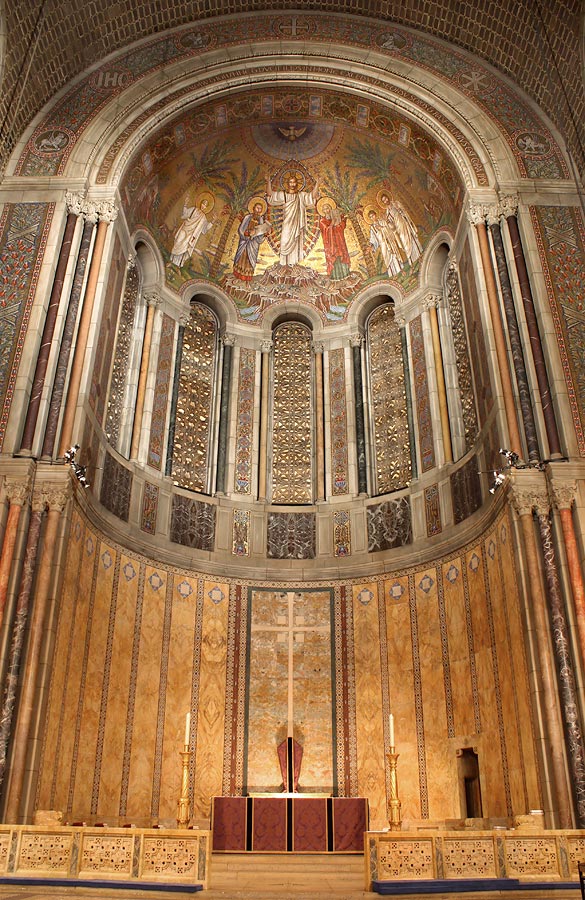
The Transfiguration in the half-dome of the apse, and stringcourse separating upper and lower apse with panels of birds and animals
It took almost a decade after the completion of St. Bartholomew’s Church in 1919 for the congregation to raise funds to decorate the interior of the church.1 In keeping with Bertram Grosvenor Goodhue’s Byzantine-style of architecture, the vestry asked Meière to design the Transfiguration in a primitive Byzantine-style for the half-dome of the apse. As requested, Meière portrayed the scene of the Transfiguration according to Mark 9: 2, 4, in which Moses and Elijah appear on either side of the transfigured Christ, who had been accompanied to the mountain by Peter, James, and John. Christ’s mandorla, the figures’ garments and poses, and the composition itself all refer to early Byzantine mosaics and icons.
Although Meière had no prior experience designing for Byzantine-style glass mosaic, she understood the aesthetic role of its vibrant gold ground:
The whole essence of Byzantine art is the dome, and when you put mosaics on a curved surface, the light striking them changes, and shadows come and go...the lights and shadows will vary as the sunlight plays over the surface.The result will be moving light, and a surface that almost appears to be living.2
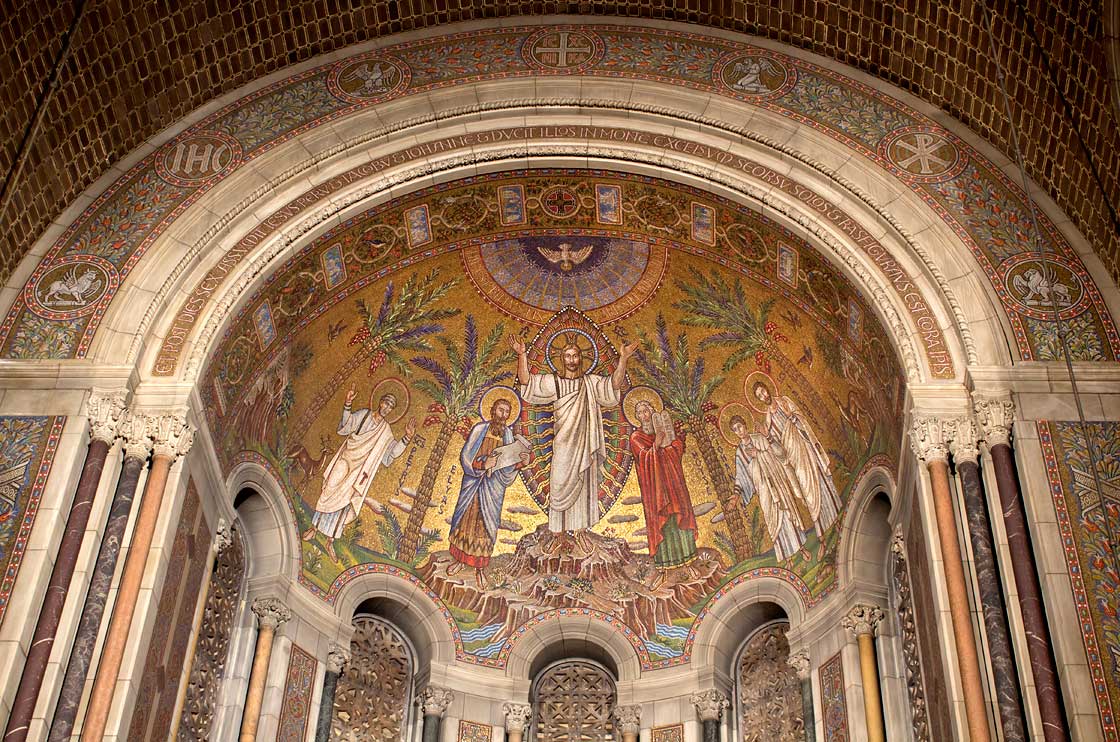
Detail of the Transfiguration in Byzantine-style glass mosaic
It was necessary for the vestry at St. Bartholomew’s to find a firm that could both fabricate and install Meière’s designs. A German firm, Pühl & Wagner, and their American affiliate in New York, Ravenna Mosaics, could handle the job. They had been contracted to fabricate and install Meière’s designs at nearby Temple Emanu-El, but the vestry wanted to see samples of their work before making a commitment. In 1928 Meière and Francis Mayers, a partner in Mayers, Murray & Phillip, visited the Pühl & Wagner factory in Berlin to see how the mosaicists would interpret her painted cartoons in the medium of glass mosaic.
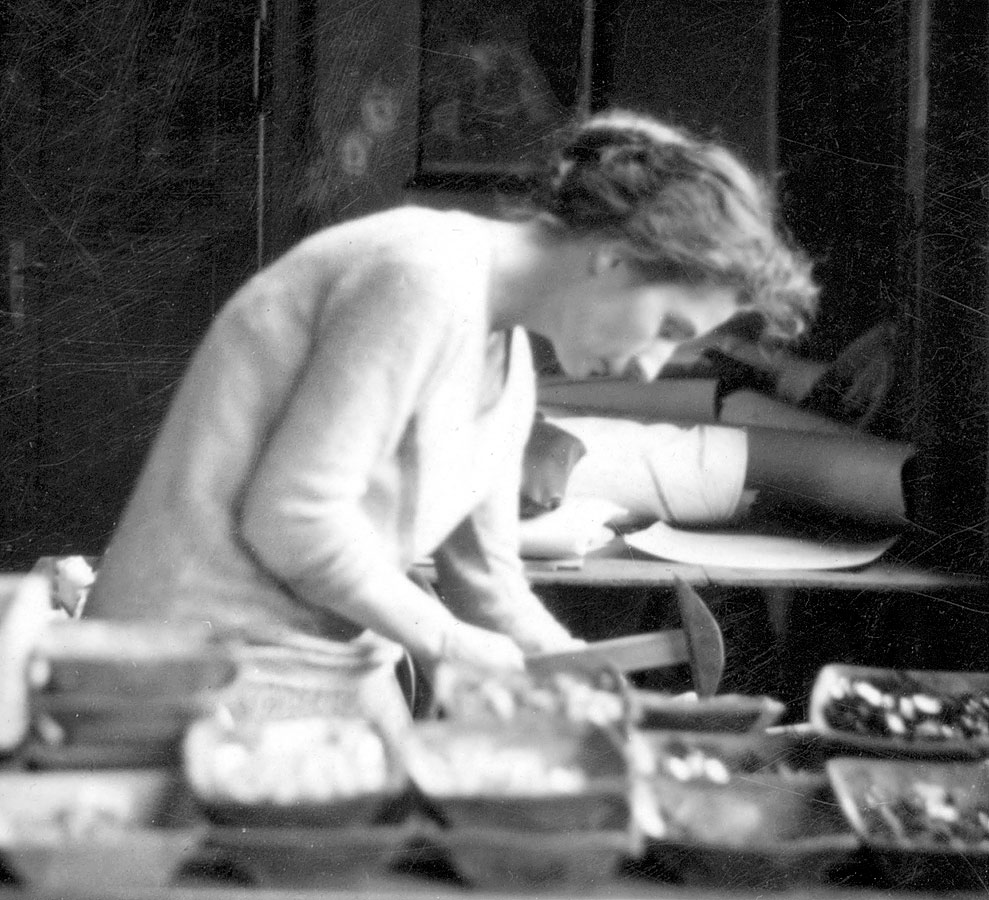
While at the Pühl & Wagner factory in 1927, Meière posed holding a mosaicist's double-edged hammer, but she herself was never a mosaicist. She was a muralist who designed for a variety of mediums, including mosaic.
Meière and Mayers were pleased with the sample mosaics they saw. They recommended that the St. Bartholomew’s vestry hire Pühl & Wagner to fabricate Meière’s Transfiguration, and the company’s American affiliate, Ravenna Mosaics, to install the completed mosaic segments in the apse.
When the Transfiguration was one-third complete, Pühl & Wagner shipped sample mosaics to New York, so that Meière could approve the colors and scale. One of these samples was the figure of St. Peter from the Transfiguration.
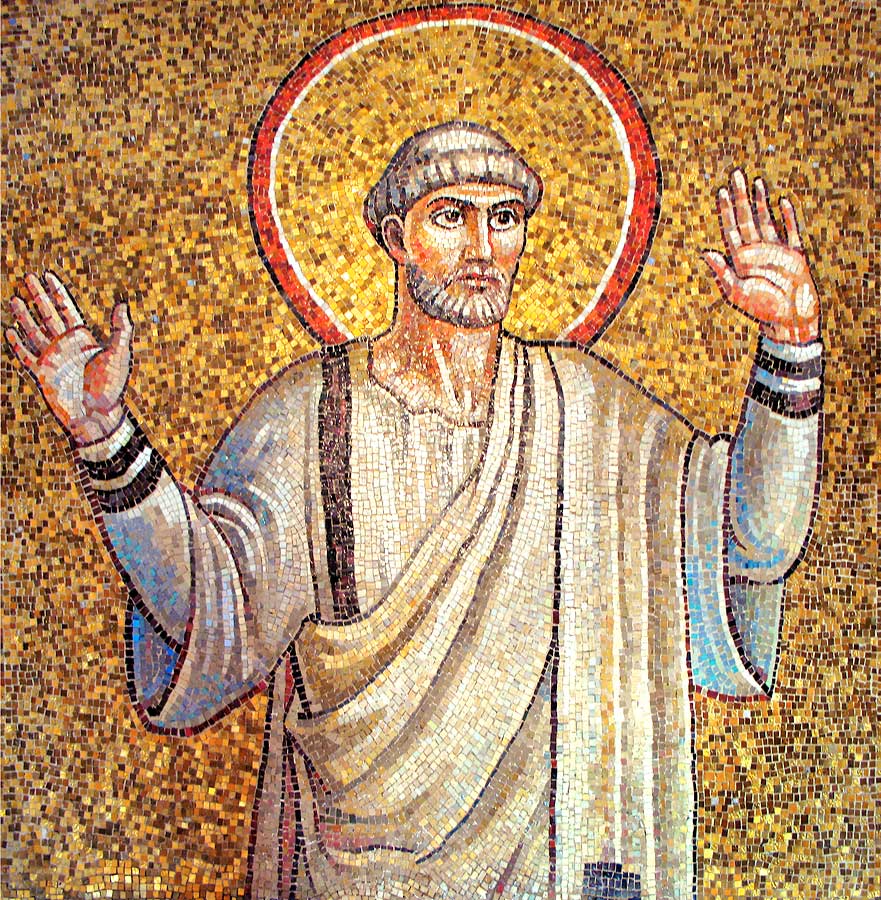
Sample of St. Peter from the Transfiguration in Byzantine-style glass mosaic showing a variety of gold hues
Meière wrote to August Wagner, owner of the factory in Berlin, telling him, “The samples for St. Bartholomew’s I think are magnificent.”3
It took one year to complete the installation of the Transfiguration in the apse—from October 1928 to October 1929. Both the apse and narthex, which Meière also decorated, were dedicated in 1930.
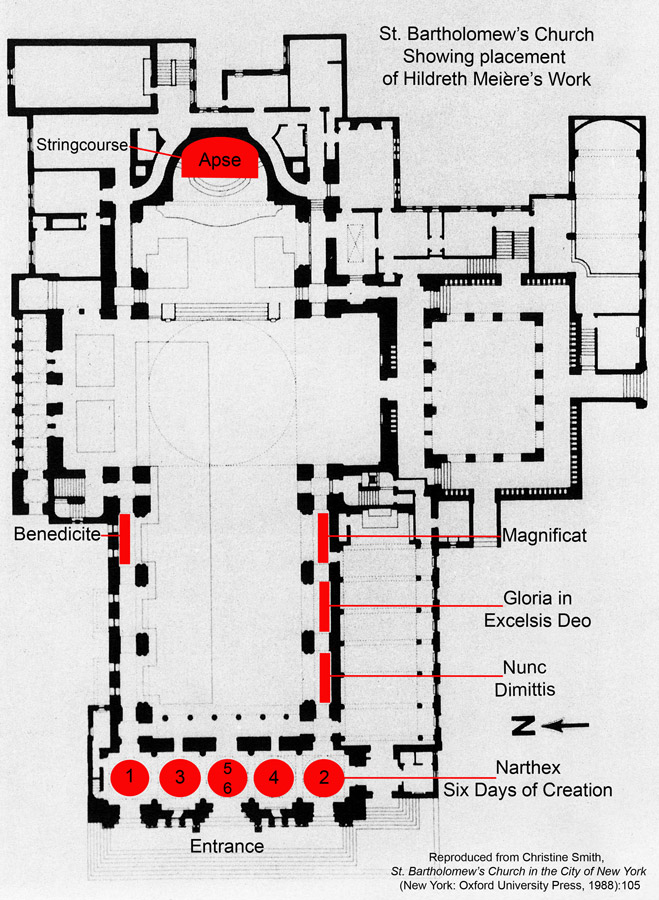
Narthex domes with the Six Days of Creation; clerestory windows with Magnificat, Gloria in Excelsis Deo, Nunc Dimittis, and Benedicite; half-dome of apse with the Transfiguration, and stringcourse separating upper and lower apse with panels of birds and animals
For a full discussion see Catherine Coleman Brawer and Kathleen Murphy Skolnik, The Art Deco Murals of Hildreth Meière (New York: Andrea Monfried Editions, 2014): 89-118.
Inge Pawlowski, “Sanctuary for the Apostles,” St. Louis Review, June 28, 1957, sec. 2.
Hildreth Meière, letter to August Wagner, December 15, 1928, Hildreth Meière Papers, Archives of American Art, Smithsonian Institution, Washington, DC.